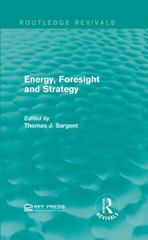please help me with this question, than you!
Question 1: A Macroeconomic Model with Time-varying Risk Aversion (50 Marks) We use a stochastic macroeconomic model to account for the aggregate uctuations of the Canadian economy. We extend the model with TFP shocks and rigid labor supply that we have covered in the course. We also consider the same data you worked with in the more recent problem sets. The representative agent's utility function is specied as: Where \"it denotes time-varying risk aversion, with unconditional average is, : 2. The CRRA parameter is stochastic, and its log follows an AR(1) process with normally distributed i.i.d. shocks: ln 3% : p1 In'Yt-l + 51,13, 514,: N N(0y 052,?) The size of the labor force is normalized to 1 and it does not change over time. The representative agent has a time endowment of one unit per period, which is devoted entirely to work (Lg:1 : 1). The production function is Cobb-Douglas: K = 213K? Iiia. Total Factor Productivity (TFP) is time-varying and its log follows an AR(1) stochastic process with normally distributed i.i.d. shocks: ln Zt : pzln Zt_1 + 52, 52,: N N (0, 032). The two shocks (Ethzlt) are negatively correlated, with correlation sz- Kt is the capital stock, which depreciates at rate 6. In this model, there is no government. We consider the HP-filtered data you constructed in the problem sets. Namely, retrieve the series (in levels) for consumption (0:) and investment (It). Compute output (K) as the sum of only these two variables. Take the log of the three series in levels and then apply the HP lter with smoothing parameter A : 1600. Consider the cyclical component of each series. 1. State the Social Planner's problem, derive the rst order conditions and obtain the equations representing the equilibrium dynamics. Comment on your results. 2. Consider the following parameters as xed: p7 : 0.95, 05., : 0.01 and pmz : 0.5. For the other parameters, consider a calibration of the model of your choice, motivating it: what considerations brought you to use this specic set of parameter values? 3. Compute the steady state numerically with Dynare. (Note: you need to be careful in the way you select the initial guesses, otherwise the procedure will not converge). Comment on your ndings. 4. Simulate the model economy for a number of periods equal to the length of the data series +100 periods. (a) Consider the following statistics for aggregate output, investment and consumption: the stan- dard deviation, the relative standard deviation with respect to output, the rst order autocor- relation, the contemporaneous correlation with output. Compare the statistics generated by the model (discarding the rst 100 periods) with their data counterparts. Comment on your results. (b) Estimate a VAR(1) model on the Canadian data. Are the (orthogonalized) impulse responses of the economic model similar to the VAR ones? If not, explain why the economic model might be failing. Can you suggest how the model could be modied to obtain a better t (you don't need to solve your proposed variant of the model)







